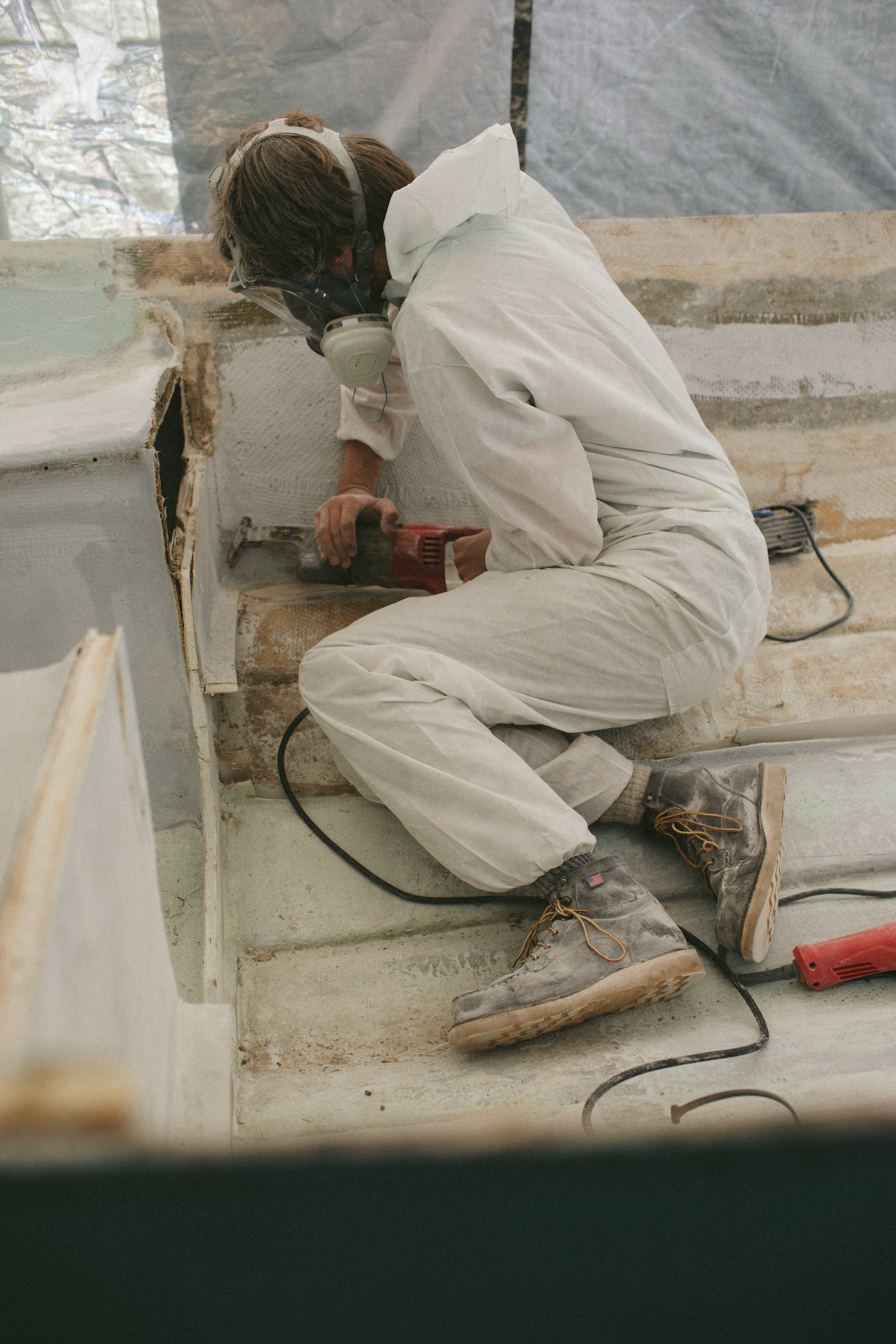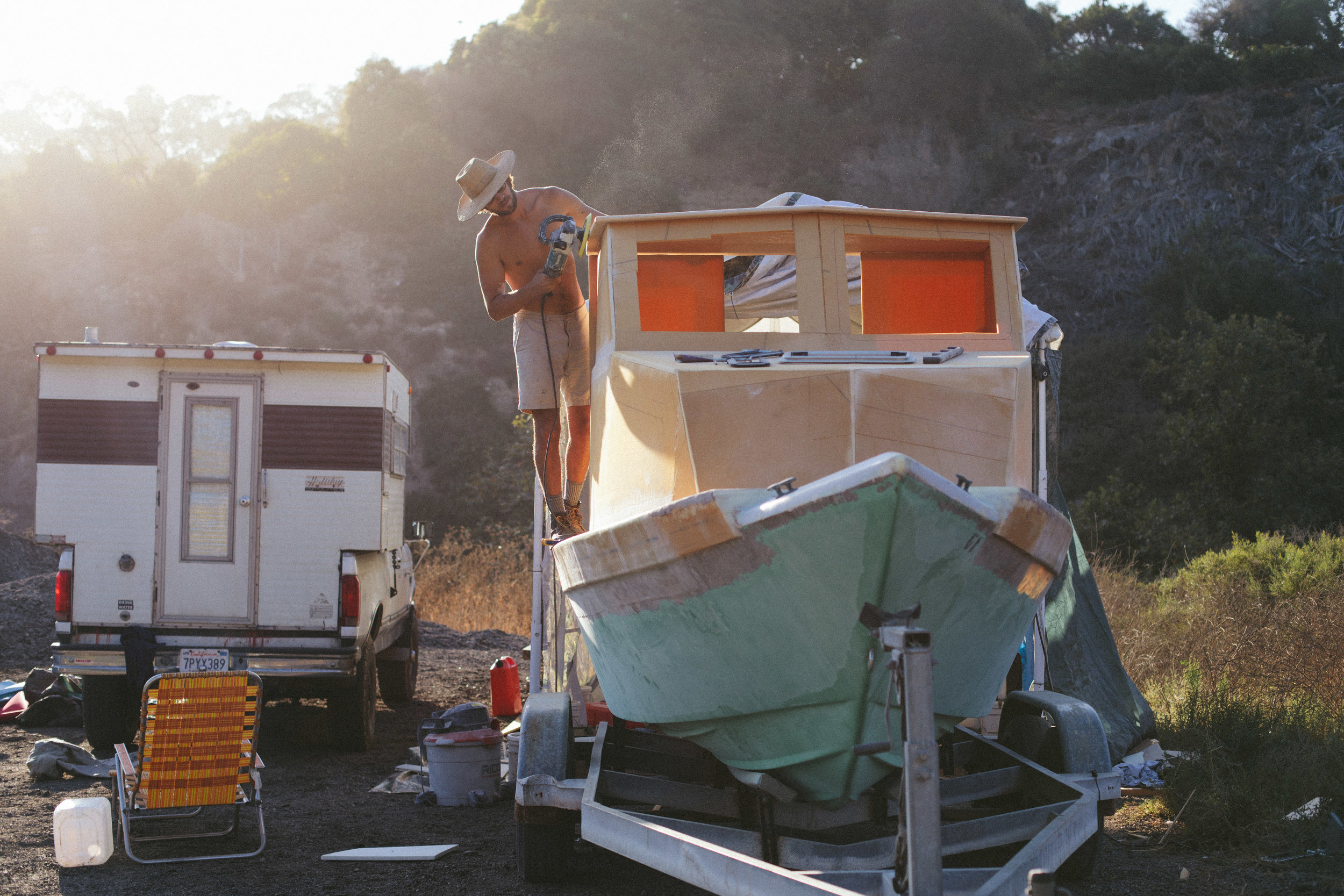Words by Trevor Gordon | Photos by Jeff Clark, Erin Feinblatt, Jeremy Koreski, Donnie Hedden | Video by Ian Durkin
In May of 2018, I walked through a field of mustard seed up to my chest, close to my home in the Santa Barbara, CA harbor. In the middle of the field sat a 20’ broken up old fishing vessel, hardly visible below the weeds. With little hesitation, I jumped at the opportunity to rebuild this once-capable little boat back into a seagoing vessel. I had no prior boat building experience, just a load of inspiration, time and patience and one destination in mind for its maiden voyage — British Columbia.
Looking back, I am not sure I knew the scope of the project I was getting myself into. The boat had sank years prior and had been dragged to this field and left completely dismantled. A frog lived in the front locker that was full of water and lichen. Fiberglass shrapnel filled the hull and a layer of mold and moss filled every pour of exposed material.
As we began grinding back any unusable remaining fiberglass, it was hard to feel any progress. Weeks of itching skin led to months of itching skin. But I knew the value of proper prep work and without it, it would be like building a house on sand.
Throughout the process of grinding and sawing apart all the old, ruined fiberglass, I would cut out the hard-to-reach pieces and need to kick out the last piece that was holding on. I found the best tool for the job was the toe or heel of my boot. It’s almost so simple that it doesn't register as a tool, but when you're not wearing them when building, you'd wish you were.
The boat had no structural support when I found her, so that had to be built back in before anything else. Two stringers from stem to stern (front to back) and three bulkheads ran its width for which everything was going to be built on top of.
Designing the cabin style with my friend, Leo, came next. Deciding what I wanted from the design and how I planned to use the cabin was some of the most fun we had during the build. At this stage, she finally began to look like a boat again.
Fine-tuning the details took many long hours. I’d spend all day, everyday, in this field with my camper parked alongside for shade and shelter (complete with snacks and cold drinks). Days were getting shorter and I knew it wouldn't be long before she would get to float again. The thought of flying across the water in a remote fjord in BC, kept me going during the long hot hours.
After one final push, the boat was finished. Named Camel after the long hours worked in the California sun, it was time to see if this Camel could swim…
TREVOR GORDON was raised in Santa Barbara, CA and currently lives aboard a 36ft sailboat home with his wife Maddie in the Santa Barbara Harbor. Trevor grew up surfing and sailing the California coast and through his surf travels has picked up photography, shooting predominately with various film formats while supplementing with digital when necessary.
Instagram: @tearevor
Website: trevor-gordon.com










